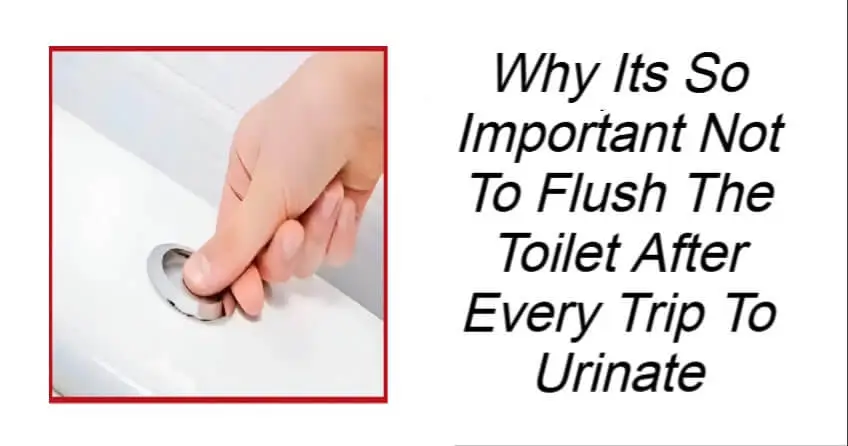Why Its So Important Not To Flush The Toilet After Every Trip To Urinate
It’s one of the most automatic habits in our daily routine: flushing the toilet. We do it without thinking—after every trip to the bathroom, we press the lever or button and walk away. But have you ever stopped to consider what happens every time you flush, especially after something as simple as urination?
What if this small, everyday action is contributing to massive water waste—without us even realizing it?
Drinking Water Down the Drain
Each time you flush the toilet, between 3 and 9 liters of clean, drinkable water are used—just to remove a few centiliters of urine. That’s perfectly treated water, the same quality you’d pour into a glass to drink, sent straight down the pipes.
To put it into perspective:
A typical family uses the toilet around 10 times a day, which can result in up to 100 liters of water wasted daily—over 36,000 liters per year. That’s enough to fill a small swimming pool. Meanwhile, millions of people around the world still lack reliable access to clean drinking water.
The “If It’s Yellow, Let It Mellow” Rule
A growing number of eco-conscious households follow a simple, yet powerful principle: “If it’s yellow, let it mellow. If it’s brown, flush it down.” In other words, only flush when it’s really necessary. Urine is sterile and poses no health risk as long as your toilet is cleaned regularly. This small change can lead to significant savings in both water and cost.
Clean Doesn’t Have to Mean Constant Flushing
Worried about hygiene or smell? No need. Here’s how to maintain freshness without over-flushing:
Add a few drops of essential oils (like eucalyptus, lemon, or lavender) to a diffuser or a small container near the toilet for natural odor control.
Clean the toilet bowl daily or every couple of days if the rule is being followed consistently.
Practical and Easy-to-Adopt
The best part? You don’t need expensive upgrades or fancy eco-tech to make a difference:
- Change your habits—reserve flushing for solid waste or strong odors.
- If you’re remodeling or upgrading, install a dual-flush toilet, which uses less water for lighter flushes (often less than 3 liters).
- Consider dry toilets for even greater sustainability in off-grid or rural areas.
Etiquette Matters Too
If you’re in a shared space or visiting someone else’s home, be mindful. Not everyone follows this habit, and flushing (or not flushing) can be a sensitive topic. Respect your host’s preferences, and communicate openly if you’re living with others.
In Summary: Why Rethink Your Flush?
- Every flush uses 3 to 9 liters of drinking water
- Urine is sterile, posing no risk if toilets are kept clean
- Easy habit change = big environmental impact
- Alternatives exist: dual-flush toilets, odor control, dry toilets
By making a small shift in your routine, you can contribute to huge water savings, reduce your environmental footprint, and help preserve one of our planet’s most precious resources.
You’ve just read, Why Its So Important Not To Flush The Toilet After Every Trip. Why not read Manager Had To Hire A New Employee.

